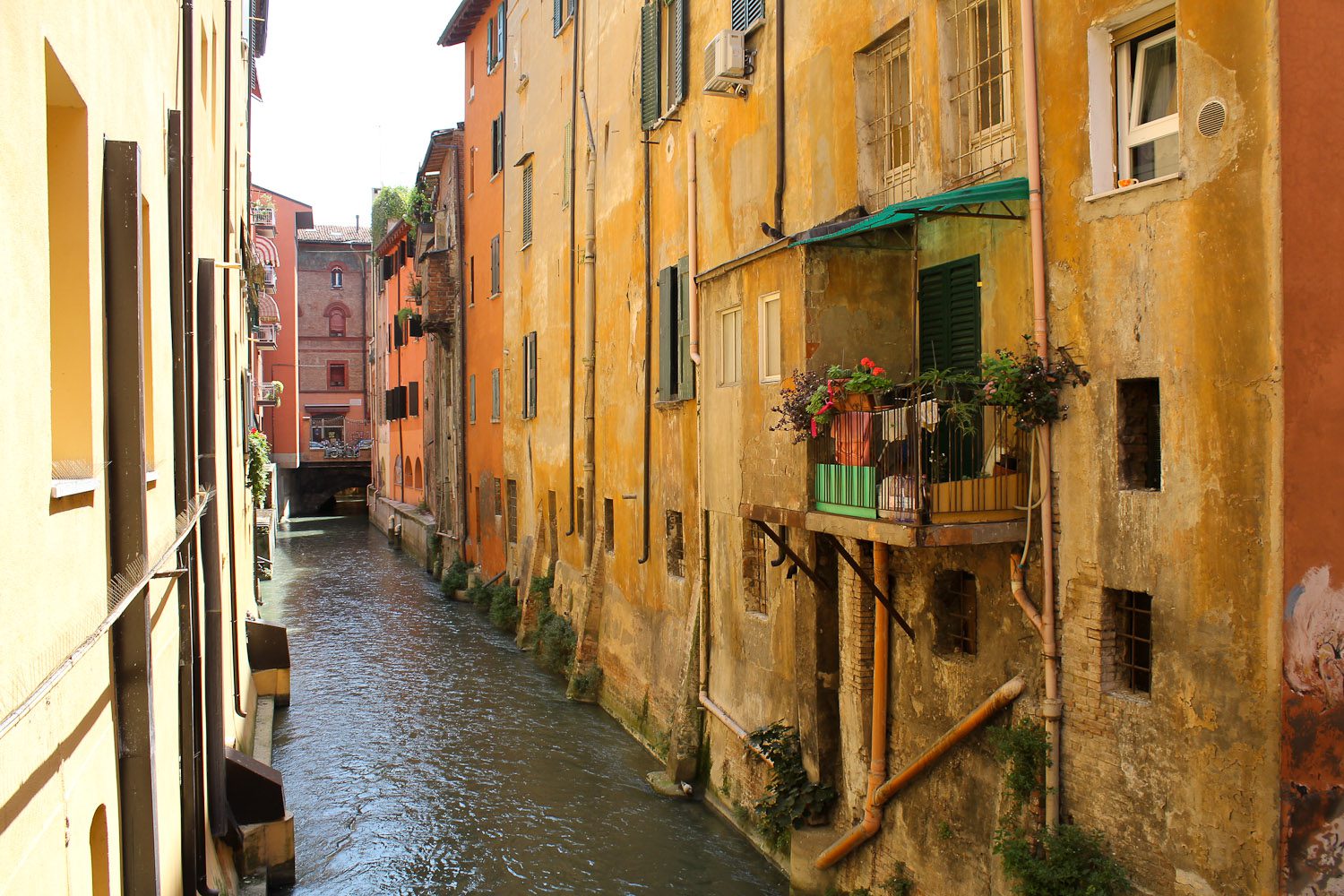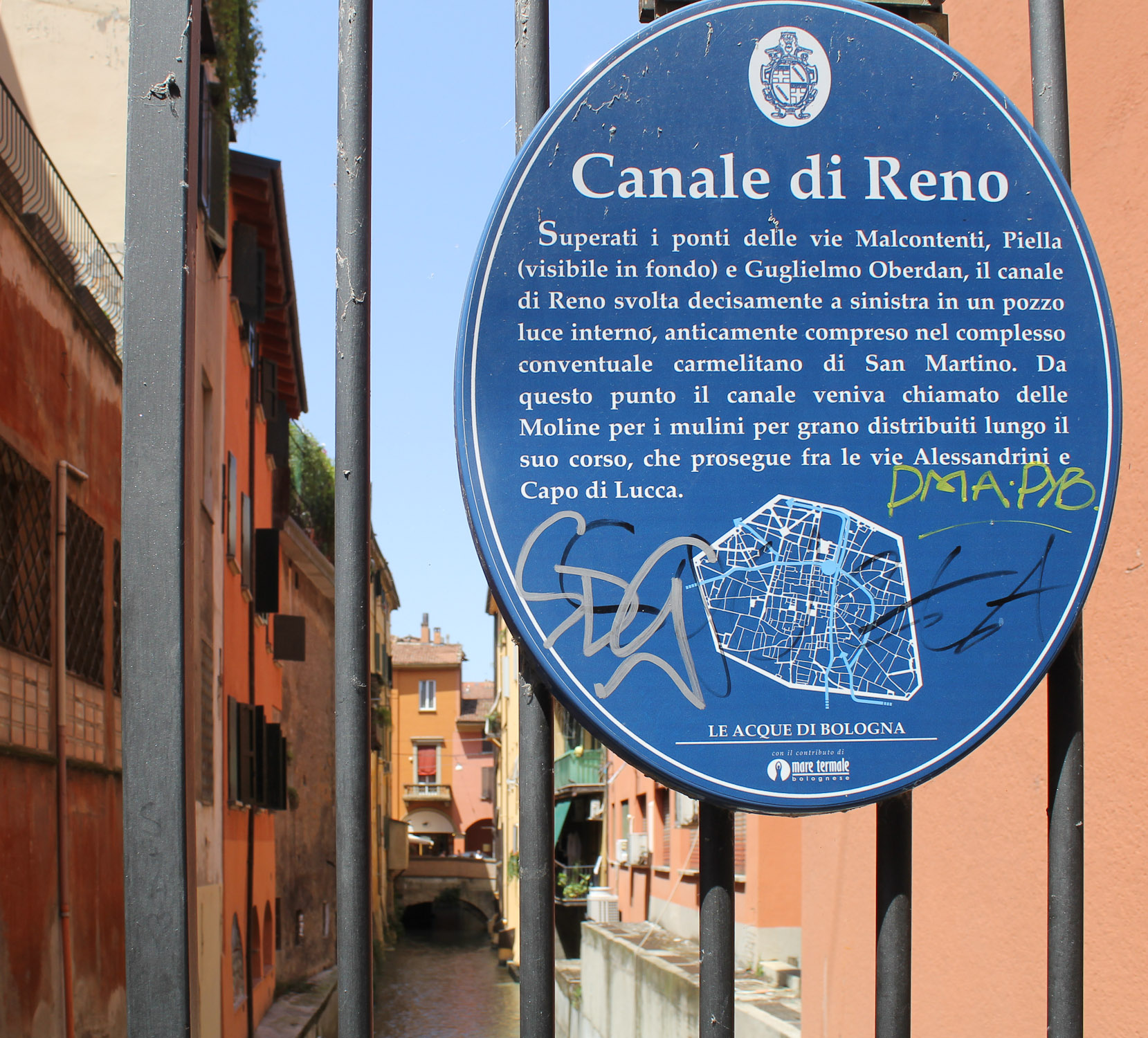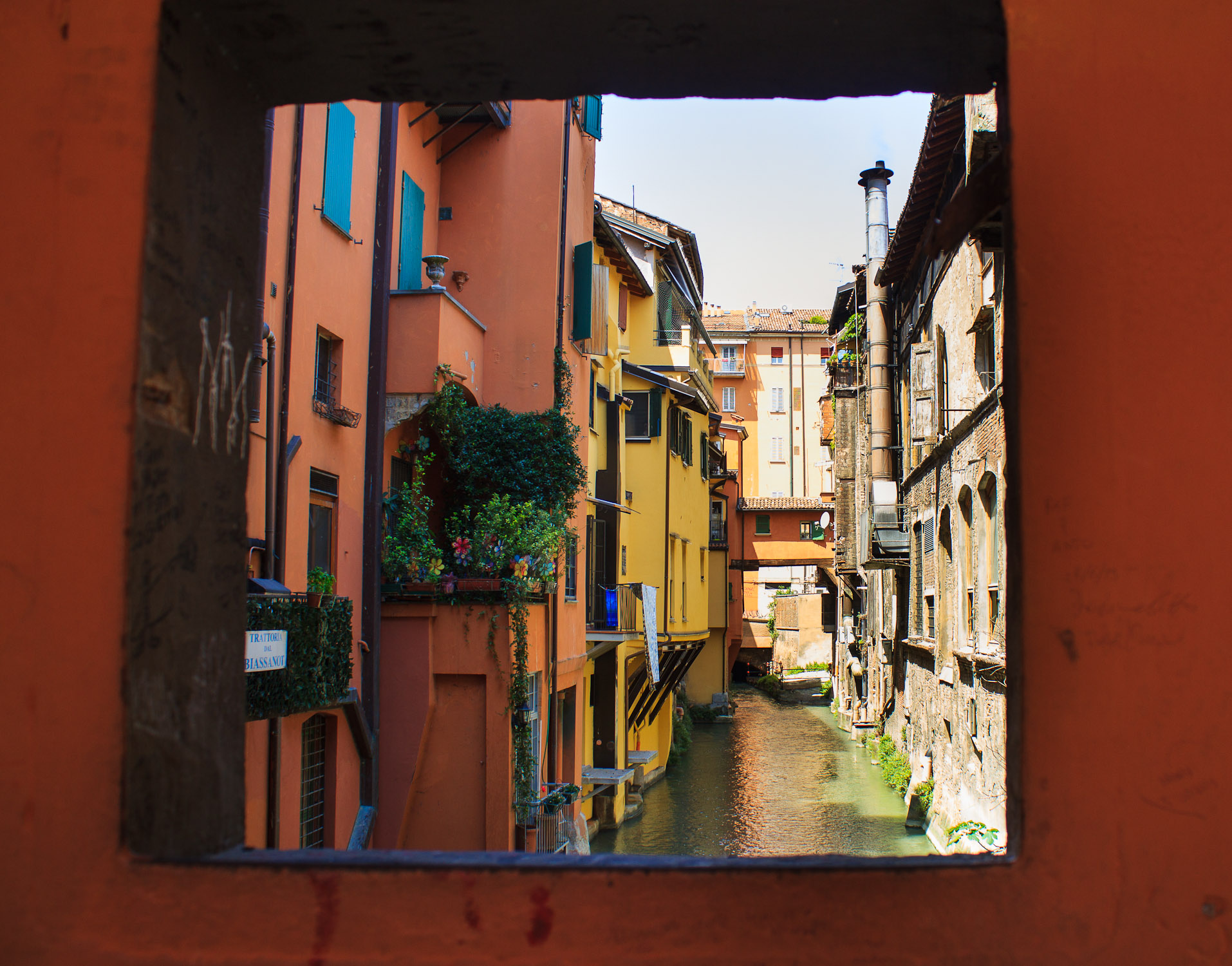Bologna’s Hidden Canals
A window to Bologna’s hidden canals and hydraulic system tells a story that turned out to be a lot more spectacular than actual sights along the “canal tour”.
Before our latest visit to the capital of Emilia-Romagna, I’d come across a leaflet describing ‘Hidden Canals in Bologna’. Apparently, Bologna managed to become one of the main commercial trade centres of the Middle Ages thanks to a hydraulic system of canals and locks that produced energy for the trades, allowed large ships to come and go and improved sanitation with a number of public wash houses.

The authorities in Bologna have started to reopen some of the hidden canals.
Water Driven Progress
Starting in the 12th century, a total of 60 km canals were dug to connect the city with the rivers Reno and Savena. The canals were used to drive water mills eg. for grinding flour. In Via Capo di Lucca, the Moline Canal is supposed to have driven 15 big grain mills that were operated through a series of artificial drops and movable sluice gates.
Bologna became the most technological advanced silk throwing town with filatoio driven by overhead shafts that were powered by water. That way they managed to industrialise the process, where silk that has been reeled into skeins is cleaned, twisted and wound onto bobbins. And over the centuries the water mills were put to a variety of other uses.
There were bark mills producing the tannin powder used in tanneries to produce leather from degreased and soaked skins and hides of animals. Mills cutting tobacco leaves in the tobacco factory, and mills running rice huskers, brick works and power stations for use at a hospital.

After the next bridges, the Reno Canal makes a sharp turn to the left and becomes Canal delle Moline due to the grain mills that used to be located along the banks.
Invisible Attractions
Fascinated by such industry based on the ingenious and innovative use of technology, I wanted to embark on a canal tour of Bologna, only to realize that the word ‘hidden’ in the headline was to be understood literally. The canals in Bologna are not ‘secret’ or ‘undiscovered’, they are concealed and therefore more or less invisible. In the old city centre, the water is mainly distributed through underground pipes, and the few and short stretches of open canals are locked in-between buildings. For a canal chaser, there’s nothing much to see in Bologna.
Outside the old city walls it becomes easier to follow the waterways. In Casalecchio, the Reno Canal starts from a big lock, and at north of the city the canals flow into the Navile, a 36 km navigable channel that connected Bologna with other cities. The start of the Navile Channel was known as Porto di Bologna or Quartiere Porto. From here, boats transported goods and people to Ferrara and Venice in about 40 hours, and it is estimated that the middle of the 18th century a fleet of fifty boats made a thousand trips a year, carrying almost 23.000 tons of goods.
Porto di Bologna was originally designed by the celebrated architect Jacopo Barozzi da Vignola, and it soon became the commercial centre of the town with factories, warehouses and shipyards. Much of Bologna and in particular this area was sadly demolished by bombs in 1943 all that is left of the original buildings is the Salara salt warehouse.
Still, there are people in Bologna hoping to uncover the hidden canals, I did find an Insta-moment by the recently restore ‘window’ with a peak view of the Reno Canal in Via Piella, and perhaps there are more to come.

A window in a wall on via Piella gives you a glimpse of Bologna’s hidden canals.


Great article! Interesting subject, great length, and historically satisfying! :) Thank you for the share!
Fascinating article. O hope that some of the canal can be opened in the future
Thank you. I could be interesting if more of these waterways resurfaced, but I guess you’d have to move some houses first.